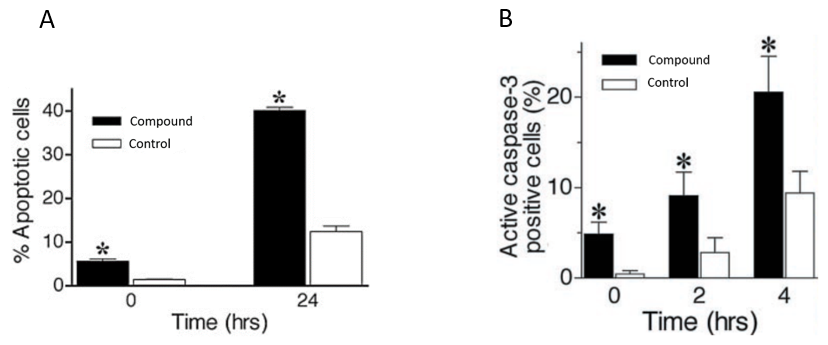Parkinson's Disease Modeling and Assays
Parkinson's disease (PD) is a progressive neurological disorder defined by a characteristic clinical syndrome of bradykinesia, tremor, rigidity, and postural instability. PD is the second most common neurodegenerative disease after Alzheimer’s disease, and the most frequent subcortical degenerative disease. It affects 1-2% of the people older than 60 years. The socio-economic cost of PD is high. In the United States, the cost per patient per year is around $10,000, with a total economic burden of $23 billion.
Neuronal loss in the substantia nigra pars compacta (SNc) and the subsequent loss of striatal dopamine content are regarded responsible for the classical motor features of PD. The misfolded α-synuclein is a major component of pathological perspective in neuronal loss. The toxic α-synuclein accumulation impairs the functions of mitochondria, lysosomes, and endoplasmic reticulum, and interferes with microtubular transport. Oxidative stress remains a cornerstone of the concepts underlying the loss of dopaminergic neurons in PD, which involves mitochondria and endoplasmic reticulum. Free radical production results in increased chemical and enzymatic oxidation of dopamine, which leads to the production of toxins such as 6-hydroxydopamine (6-OHDA). Besides, altered accumulation of iron in SNc, changes in calcium channel activity, altered proteolysis (proteasomal and lysosomal), changes in α-synuclein aggregation, and the presence of mutant proteins are all examples of how oxidative stress might be induced in PD.
Currently drug treatment provides only symptomatic relief. There is a great demand to explore how knowledge of the pathogenic processes and the use of experimental models of PD interlink to assist in the searching for neuroprotective/neurorestorative treatments.
With extensive experience and state-of-the-art technologies, Creative Bioarray is offering Parkinson's disease modeling and assays to help our customer generating new insight into disease pathophysiology and accelerating the process of drug development.
Advantages
- Various cells types (both cell lines and primary neuronal cultures; human cells or other species) are available for building Parkinson's disease models according to your application.
- Multiple evaluation aspects for new drugs.
- Customized assays and High-throughput screening are available on request.
Disease modeling and assays available
Creative Bioarray offers the development of custom designed in vitro models by using primary neuron cultures, cell lines, iPS cells with genetic modifications, which are phenotypically closer to the neuronal network and mimic PD pathology. We could also offer a wide range of assays that enable more accurate prediction of patient response to pharmacotherapy:
- Neuronal viability assays (including cell numbers, neurite outgrowth, and apoptosis)
- Neuro imaging for Cellular Morphology
- Oxidative Stress test
- Calcium signaling assay
- Mitochondrial dysfunction assay
We provide this powerful and versatile tool for PD therapy as well as basic research to help our customer understand more about the underlying mechanisms in the progression of PD.
 Figure 1. Oxidative stress (exposure to H2O2 treatment) can increase apoptosis and caspase-3 activation in human neuroblastoma cells.
Figure 1. Oxidative stress (exposure to H2O2 treatment) can increase apoptosis and caspase-3 activation in human neuroblastoma cells.
Quotation and ordering
Our customer service representatives are available 24hr a day!
References
- Dickson, Dennis W. Parkinson's disease and parkinsonism: neuropathology. Cold Spring Harbor perspectives in medicine. 2012, 2.8: a009258.
- Dexter, D., and Peter J. Parkinson disease: from pathology to molecular disease mechanisms. Free Radical Biology and Medicine. 2013, 62: 132-144.
- Sherer, T., et al. An in vitro model of Parkinson's disease: linking mitochondrial impairment to altered α-synuclein metabolism and oxidative damage. Journal of Neuroscience. 2002, 22.16: 7006-7015.
Explore Other Options